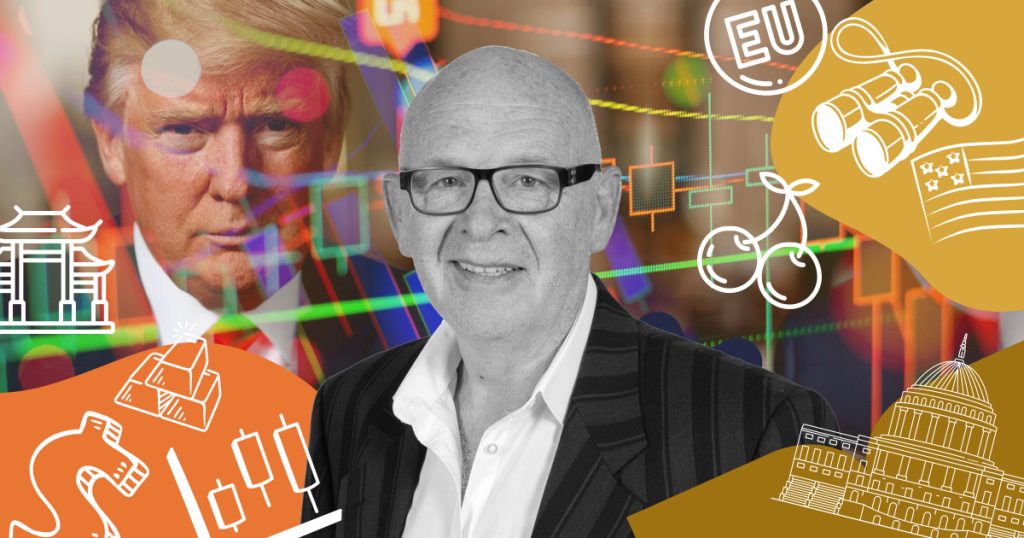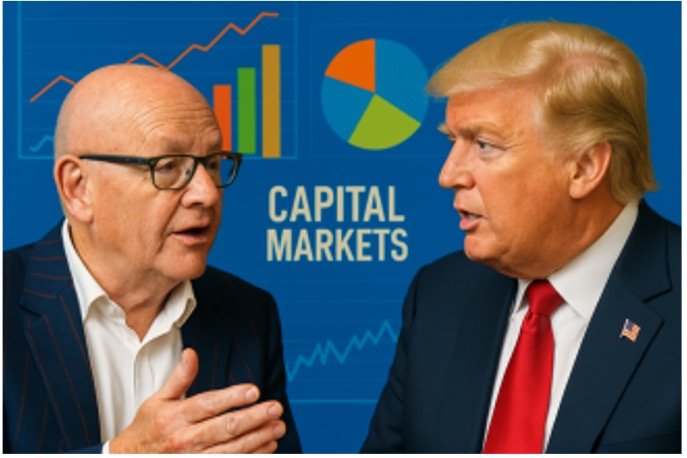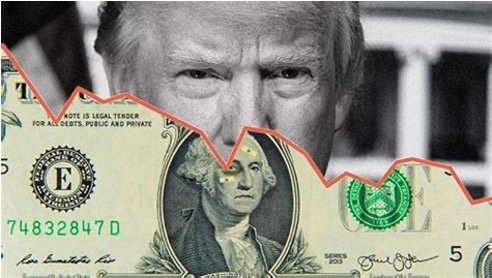
This past week, I did something radical – and surprisingly unwise: I held my positions and stayed put while the chaos unfolded. No wild moves, no panic trades. Just patience. Sometimes, doing nothing is doing something.
The trigger for the turmoil? Trump’s long-anticipated tariffs. Despite being flagged for months, their official roll-out still sparked market mayhem. Traders scrambled, analysts blurted out half-baked takes, and the markets responded like a toddler at bedtime – loudly and irrationally.

The volatility was intense, but not entirely irrational. Markets hate uncertainty, and tariffs – by design – introduce friction into the global trade machine. It’s worth noting that while these policies were well-telegraphed, the lack of clarity around their scope and implementation left plenty of room for confusion. And confusion, in capital markets, usually equates to downside.
Interestingly, many market reactions betrayed a deeper truth: we were long overdue for a correction. Equities, especially in the U.S., had been on an unsustainable tear, driven by cheap liquidity and lofty expectations. In that context, tariffs were less the cause of the drop and more the pin that popped a bubble begging to burst.
Now, let’s talk substance. Living in Europe, I’m well aware that these tariffs will sting on this side of the Atlantic – at least in the short run. Price increases, retaliatory measures, and supply chain disruptions are all part of the package. But I also believe, perhaps controversially, that Trump is playing the long game in service of American workers. If successful, this could be a net positive for middle classes across the developed world – not just the U.S.
Of course, short-term discomfort rarely wins popularity contests. Especially not in Brussels, where many of the loudest objections are coming from leaders who’ve done little to protect their own economies over the past two decades. European policymakers have been masters of crafting regulations that inhibit growth and stifle innovation, all while failing to build resilient industrial or employment policies.
So yes, I’m keeping one eye on Wall Street, but I’m not overly spooked. Corrections are healthy, and global markets desperately needed one. While some politicians are foaming at the mouth, I’m quietly enjoying the disruption to the status quo. It’s been a long time coming.
Back to the macro view: The EU’s reaction has been predictably theatrical – strong on rhetoric, weak on strategy. But the truth is, Brussels has far more to lose in a drawn-out trade skirmish than Washington. If the EU goes beyond posturing and moves toward actual retaliatory tariffs, the real losers will be European workers, not U.S. policymakers.
From an investment perspective, I’m cautious but not bearish. I don’t enjoy market chaos, but I’m not scared of it either. There’s a long road ahead, and I suspect we’ve not yet reached the bottom of this particular leg down. That said, better to get through the rough patch quickly, find a solid base, and start building from there with renewed clarity.
One thing that’s been missed in much of the noise: this isn’t just about tariffs – it’s about re-calibrating the entire global trade framework. Trump is attempting to level a playing field that’s been tilted against U.S. interests for decades. That’s going to ruffle feathers. But if successful, it could lay the groundwork for more balanced, sustainable trade relationships.

It’s also worth asking why Europe isn’t taking a harder stance against the real culprit in this global imbalance: China. The country imposes steep trade restrictions, benefits from state subsidies, pollutes with impunity, and relies heavily on low-wage labor. Yet European leaders are seemingly terrified of pushing back. It’s baffling.
As for currencies: I recently bought dollars at 1.09 against the euro and 1.30 against sterling. With the current levels of uncertainty, I may be holding that position for a while. I’m okay with that. A diversified currency basket feels sensible this year, and if the dollar weakens further, I might even add to it.
The UK, meanwhile, continues to look like an economic basket case. I wish I could be more optimistic, but with the current leadership, it’s hard to see a clear path forward.
There is one bit of good news from this week: the $200 drop in gold. I’d sold some call options last month (which expire soon), and just a few days ago things were looking tight. Now, with gold pulling back, those options are trading at half the price I sold them for. Not out of the woods yet, but it’s a much more comfortable position. I’m still holding my physical gold so I’m not bearish – but that last rally felt well overdone. The options play was just a tactical move, and I’ll be glad when it’s closed out.
In the meantime, I’m mostly observing. I’ll occasionally take advantage of short-term volatility with intra–day trades, but those moves are too fast to cover meaningfully in this kind of update.
One final thought: whatever the critics say, Trump’s tariff strategy could help reduce the U.S. deficit over time. That’s not a small achievement. And with roughly 25% of U.S. debt being restructured this year, bond markets are helping, and if the dollar weakens further, that might prove to be the cherry on the cake.
As always, time will tell. Until next week…

The post Unless You’re Day Trading, Now Might Be the Time to Sit Tight first appeared on JP Fund Services.
The post Unless You’re Day Trading, Now Might Be the Time to Sit Tight appeared first on JP Fund Services.
The post Unless You’re Day Trading, Now Might Be the Time to Sit Tight first appeared on trademakers.
